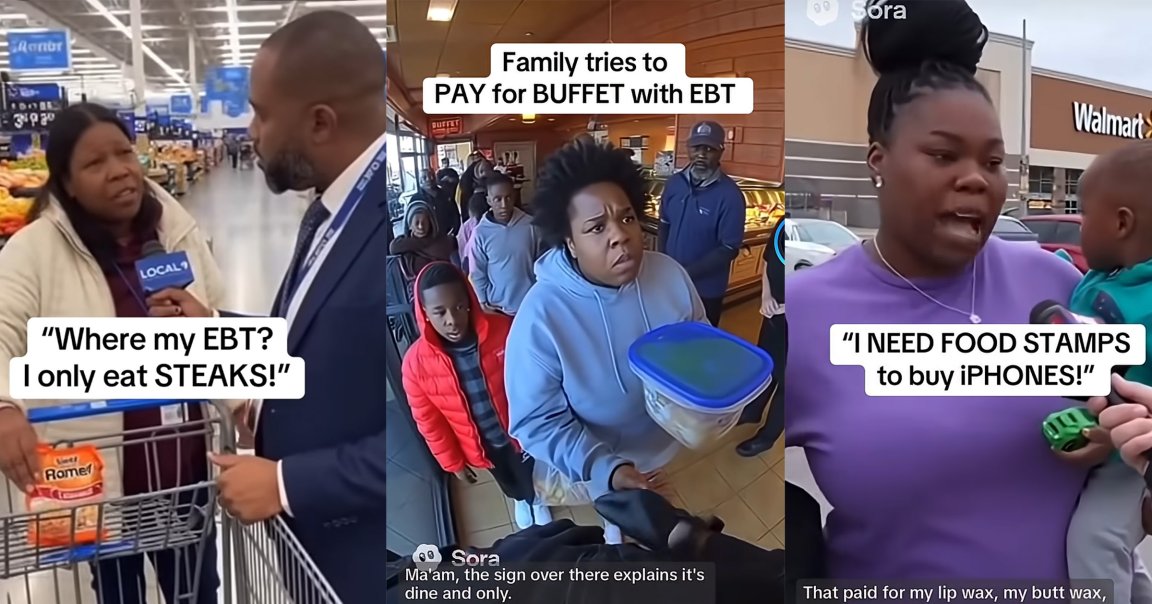
The US government shutdown has officially reached a month in length, the second longest federal funding gap on record. That makes it a perfect storm for the chaos-fueled Trump administration, which now has a de facto kill switch that Elon Musk’s DOGE couldn’t even dream of.
As the shutdown drags on, it’s wreaking havoc on the nation, leaving millions of government workers without pay. As a consequence, the US is suffering issues like sporadic airport closures and massive delays in small business loan processing, issues which will surely have a negative impact on GDP growth.
One of the most pressing issues, however, is the shutdown’s effect on the Supplemental Nutrition Assistance Program (SNAP), commonly referred to as food stamps. The US Department of Agriculture, which oversees the program, had warned that the program’s 42 million recipients would likely go without starting on November 1 — though as of October 31, a judge blocked the White House from suspending the program.
Where the fight goes next is anyone’s guess, but the eruption of discourse about food stamps has been influenced by a disruptive new force: generative AI, and specifically OpenAI’s Sora 2, the video generation engine responsible for filling social media with incredibly realistic fake clips.
One clip clearly labeled with a Sora watermark nabbed nearly 500,000 views on TikTok alone. It shows a Black woman explaining to a local news reporter how she “sells” her government assistance for cash. “Imma keep it real with you, I get over $2,500 a month in stamps,” the AI-generated woman explains. “I sell ’em, $2,000 worth, for about $1,200-1,500 cash.”
“That’s why everybody’s upset,” she says. “Folks say we’re taking advantage, but that’s how we get by.”
Most social media users replying in the comments appear oblivious to the fact that it’s AI.
“This isnt [sic] about feeding their kids this about getting their hair and nails done,” one top comment read.
Even more troubling are those who realize it’s AI, but run with it anyway.
“That’s AI,” one commenter notes under a version of the same clip uploaded to YouTube. “But that is what is happening,” another replies. “Despite its fabrication, the clip highlights genuine SNAP trafficking issues that have long been existing in our society,” another caption of the same reel claims on Facebook.
On Elon Musk’s X-formerly-Twitter, the right-wing influencer Mila Joy shared the video uncritically to her 426,000 followers. “What an absolute SCAM,” Joy wrote. Though the video has since-been removed, it managed to receive over 1.7 million views, boosted by fellow right-wing accounts as well as X’s own summary tab of “Today’s News.”
In reality, data shows that food assistance fraud is incredibly rare. A 2024 analysis in Mississippi, for example, found that of the state’s 390,761 SNAP recipients, only 592 individuals were investigated for misuse of funds, and only a third of those probes uncovered evidence of actual fraud. (It also bears mentioning that SNAP is dolled out via a plastic debit-like card, not literal “stamps” that can be easily bartered on the street.)
Unfortunately, the use of AI to generate egregious misinformation about the disadvantaged doesn’t end with manufactured SNAP fraud. For example, a YouTube account called Buffet Battle has a nearly endless feed of obviously AI-generated clips showing poor people, many of them Black, demanding tomahawk steaks, stealing food, or rioting in Walmart after their government food benefits run out.
Some AI clips only have a couple thousand views, but many do five or even six digit numbers, boosted by noxious comments.
These videos traffic in vicious stereotypes: heavyset Black people become violent thieves when benefits lapse, while poor whites have thick Appalachian accents, gnashing on deep-fried possum with rotting teeth. Each reel is a shot of espresso for anyone cheering on a lapse in desperately needed food aid to the country’s most needy.
This slop apparatus does more than just generate clicks; its despicable effect is to manufacture consent for undermining SNAP, a program that feeds roughly 42 million poor and working people across the United States. According to the non-partisan Center on Budget and Policy Priorities, over two thirds of SNAP recipients are either children, elderly, or disabled. Of those able-bodied workers with at least one child who receive SNAP, a whopping 89 percent of them have jobs.
Put another way, AI has become a powerful tool in perpetuating the myth of the welfare queen — a harmful and unfair stereotype dating back to the days of Ronald Reagan. In the wake of the largest transfer of wealth from poor to rich in the country’s history, this kind of misinformation helps blame the victims for the poverty it helped create.
More on AI slop: Applying to Jobs Has Become an AI-Powered Wasteland